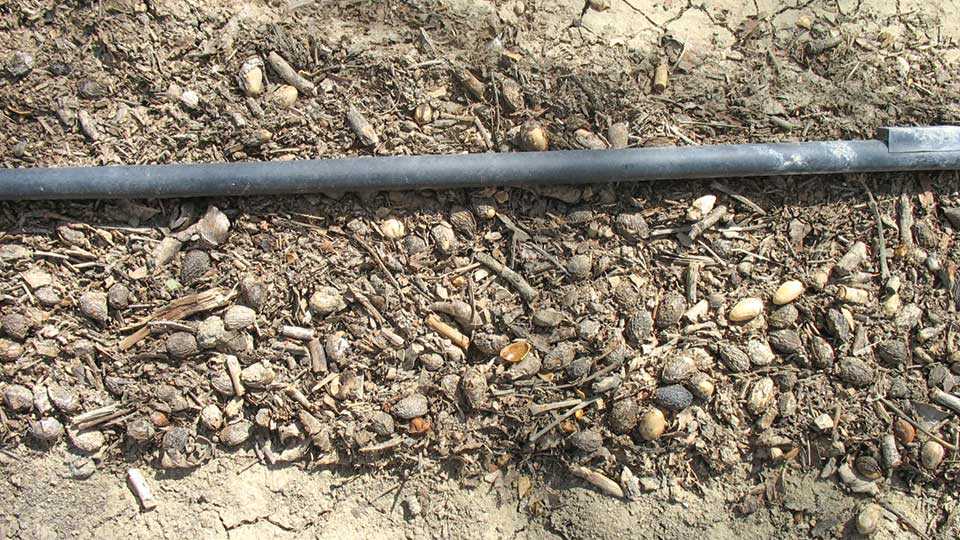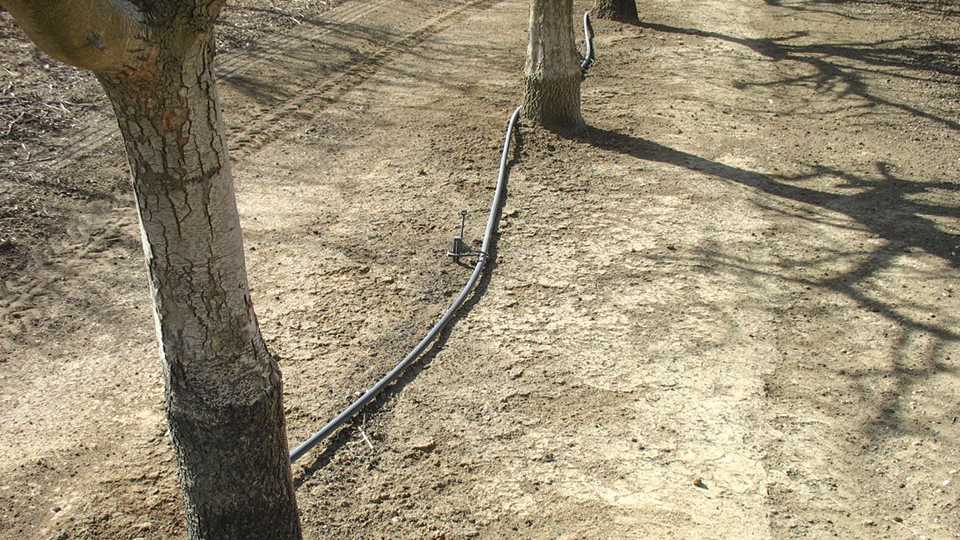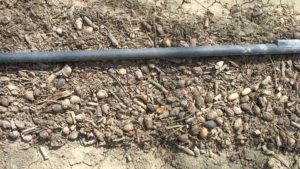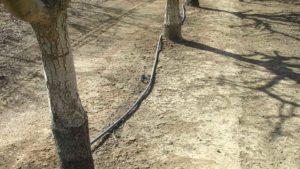Navel Orangeworm Plague Might be Growing Out of Control
When it comes to navel orangeworm control in your pistachio, almond, and walnut orchards in the fall and winter, sanitation is the key. While that sounds simple — destroy any mummy nuts — the truth is there are a lot of factors that can make a simple solution complicated.
These complications have financial implications, as labor to help clean up the orchard can be costly and time-consuming. These complications can also come in the form of weather issues that make postharvest cleanup more of a challenge.
“Although this is a proven practice, we still see some growers are not doing this practice, for whatever reason. Sometimes, it is difficult to do mummy sanitation due to the rainfall in the winter, or due to the heavy ground in some orchards. But it is important to plan in advance considering these factors. Sanitation can be done at any time between October and Feb. 1,” Jhalendra Rijal, University of California Cooperative Extension Area Integrated Pest Management Advisor for the Northern San Joaquin Valley, says.
Prioritize This Winter
As harvest wraps up, it’s a good time to evaluate your overwintering pest pressure, says Emily Symmes, University of California Cooperative Extension Area Integrated Pest Management Advisor for the Sacramento Valley Region. Assess your NOW presence in the mummies in your orchard. This way you can prioritize which orchards need more of your attention in the off-season. Symmes suggests a triage approach. The blocks with the most pressure should be the first to get your attention.
“If economics or orchard access may be an issue this off-season, focus initial and most thorough sanitation efforts where you will get the most bang-for-your buck. Consider harvest damage, overwintering pressure (the combination of mummy density and mummy infestation), history of damage in the orchard or block, and external pressure factors,” she says.
These external pressure factors include increased vulnerability due to nearby infested orchards.
“As an individual grower, you can make a lot of effort to heavily sanitize your orchard. But if your neighbors fail to do the same, you may be at risk of navel orangeworm colonizing from these nearby infested orchards,” says Houston Wilson, University of California Assistant Cooperative Extension Specialist in Integrated Pest Management. “This is a fairly mobile pest, and so sanitation likely works best as an area-wide approach.”
More than Just Sanitation
Yes, sanitation is the most important part of management. But a key component of sanitation isn’t just removing mummy nuts, it’s also crucial to destroy the mummy nuts by shredding or mowing. While this is easier in almonds and walnuts, pistachio orchard sanitation is more complicated.
“Pistachios are small, and that makes them more difficult to destroy.” Wilson says. “Many growers destroy mummy almonds and walnuts by disking, or use of a flail mower, but this is less effective with pistachios.”
Symmes says given the nut size of pistachios, they’re just easier to miss during the removal and destruction process.
“They are more likely to hang up in the trees, tree crotches, cracks on the ground, etc.,” she says. “For any nut crop, make sure to blow nuts off berms, into tree rows, out of crotches, etc., prior to destroying on the ground. Always consider areas around the orchard where mummy nuts might stockpile – make sure not to miss those.”
Think About Harvest … and Beyond
While this season’s harvest is wrapping up, a strategy to consider is doing a second shake in your walnut orchard to clean up low-value nuts and prevent mummies.
“Anything that leaves more mummies behind translates to more potential navel orangeworm carryover, and therefore will require greater investments in sanitation efforts to achieve low damage next year,” Symmes says.
And, it’s a good idea to start thinking about orchard management for 2020 – whether that’s monitoring, mating disruption, or even planning an early harvest before third flight.
“The idea is to harvest the nuts before the beginning of the third or fourth navel orangeworm (NOW) flight to prevent egg-laying by these fresh females,” Rijal says. “Every orchard, in terms of crop vulnerability and NOW pressure, can be different, and a close look of nut development and NOW population is critical to understand what’s going on at a particular time.”
Wilson says the risk of aflatoxin contamination, which is associated with navel orangeworm infestation, adds further pressure on growers. “For many the goal is less than 1% or 2% infestation,” he says, “and we’ve got to meet the growers where they’re at with this.”
Wilson says given the current difficulties destroying mummy pistachios, it may be time for some new technology to meet the growers’ needs. For instance, by developing better tools to help crush and destroy pistachio mummies.
“It’s a technological problem in some regard,” he says. “There’s an insect issue, but developing a better piece of machinery to destroy pistachio mummies is going to require an engineer, not an entomologist.”
Understanding the Pest
Brad Higbee, Research and Development Manager at Trécé Inc., agrees with Symmes that neighboring properties can be an issue – and they don’t have to be nut orchards. “A common cause of navel orangeworm infiltration is adjacent crops that may harbor relatively high populations,” he says.
Higbee says it’s quite common for high populations of NOW to move into different host crops, as they can feed on many different hosts. Since California has nearly 400 crop offerings, there are many places the pest can go. But, naturally, tree nuts are the preferred crop. Plus, in the last 10 to 20 years, there’s been a significant growth in tree nut acreage, so that can compound any pest pressure issues.
“This insect is very good at dispersing — it’s a strong flier,” Wilson says. “They can move quite a bit.”
With an understanding of how navel orangeworm can cover ground, it’s critical to take a broader approach to management.
“Effective navel orangeworm management to get to low damage requires an area-wide approach, no matter the crop,” Symmes says.
Holistic Approach
Rijal agrees, noting growers need to take a holistic approach to pest management.
“Effective NOW control can be achieved by adopting cultural methods, such as mummy sanitation and early harvest, utilizing orchard damage history and seasonal pest and crop monitoring information in combination with mating disruption and insecticide as needed,” he says.
The best way to stop navel orangeworm infestations in the off-season, Symmes says, is to “break the life cycle by removing the population and their overwintering sites. Mummies are also the development sites for early NOW generations next year.”
In sum, when it comes to navel orangeworm, growers have to be paranoid, Higbee says.
“Never think you are safe from NOW,” he says. “Constant vigilance via monitoring is the best approach.”


















